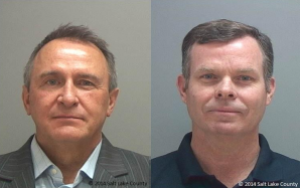In the fall of 2014, the Utah Supreme Court ruled to reverse a 2012 Utah Court of Appeals decision in the Grace Kelson case, which had vacated Ms. Kelson’s conviction for pattern of unlawful activity and reversed and remanded for a new trial on all other charges. The Utah Supreme Court’s decision remanded the case back to the court of appeals for further consideration of any remaining issues in the case, namely to consider an alternative ground for reversal of Ms. Kelson’s convictions that the court of appeals did not consider.
As background, in or around October 2001, Ms. Kelson and the owners of a mortgage company attempted to purchase a $15 million letter of credit to fund the two development projects. In order to secure the letter of credit, Ms. Kelson and the owners had to raise $125,000. As a result, they set about persuading friends, colleagues, and the families of their friends and colleagues, to provide funds for the letter of credit. In exchange for funding the letter of credit, the investors received promissory notes signed by Ms. Kelson for amounts several times larger than the amounts they provided. The promissory notes stated a financial services company that Ms. Kelson was the registered agent of would pay the investors within thirty days. However, Ms. Kelson failed to secure the line of credit and the investors were never paid. Ms. Kelson was subsequently charged and convicted on three counts of securities fraud, one count of offering or selling unregistered securities; one count of sales by an unlicensed broker-dealer, agent, or investment advisor; and one count of engaging in a pattern of unlawful activity. Ms. Kelson appealed her convictions.
On appeal, Ms. Kelson argued that her convictions should be overturned on the basis of ineffective assistance of counsel, and that the trial court erred in denying her motion for directed verdict because the court misapplied the UPUAA. The Utah Court of Appeals agreed, overturning Ms. Kelson’s UPUAA conviction and remanding for a new trial on all other charges. Specifically as it related to the pattern of unlawful activity conviction, Ms. Kelson argued that her activity in this case didn’t constitute a pattern of unlawful activity as a matter of Utah law. The court of appeals agreed. According, to the holding in Hill v. Estate of Allred, “[t]he proper test for determining whether there was a pattern of unlawful activity is whether there was `a series of related predicates extending over a substantial period of time’ or a demonstrated threat of continuing unlawful activity and not whether there were multiple schemes.” In the eyes of the court of appeals, the State had failed to satisfy the Hill test because:
Although Kelson’s actions involved multiple alleged crimes committed for the common purpose of obtaining cash, Kelson’s alleged crimes took place over a matter of days. Kelson first alerted Employee about the opportunity shortly before October 11, 2001, and all checks exchanged for promissory notes were deposited by October 15, 2001. Thus, Kelson’s alleged unlawful activity took place over a “closed period,” and the State was required to show “‘a series of related predicates extending over a substantial period of time.'” The State does not contend that it has done so, nor could it have made such a showing. As the Supreme Court noted in H.J., “[p]redicate acts extending over a few weeks or months,” which do not threaten “future criminal conduct,” do not constitute a substantial period of time sufficient to show continuity. Accordingly, Kelson’s acts over the course of only a few days are insufficient as a matter of law to satisfy Hill’s requirement that a pattern of unlawful activity must occur over a substantial period of time.
The State thereafter filed a petition of certiorari to the Utah Supreme Court, but did not challenge the court of appeals ruling on the pattern of unlawful activity conviction. The Utah Supreme Court disagreed with the court of appeals ruling on the securities conviction, and overturned the decision. The Utah Supreme Court reasoned “the jury instruction in question was an accurate statement of the underlying criminal law and not a burden-shifting evidentiary presumption.” As a result, the Utah Supreme Court “reject[ed] Kelson’s claims of ineffective assistance of counsel and plain error, and reverse[d] and remand[ed] to the court of appeals,” for further consideration of any remaining issues in the case.
While Ms. Kelson’s vacated convictions for securities fraud were ultimately overturned by the Utah Supreme Court, the court of appeals decision regarding the UPUAA has stood. The court of appeals decision is important because it further solidifies the Hill test, which recognizes that in order to constitute a pattern of unlawful activity under Utah law, the criminal activity must extend over a “substantial period of time.” If it does not, then a UPUAA charge may not be sustained as a matter of law. It remains to be seen what will happen to the rest of Ms. Kelson’s appeal, but at least her case has produced one favorable result, even if her convictions are ultimately upheld by the court of appeals.










